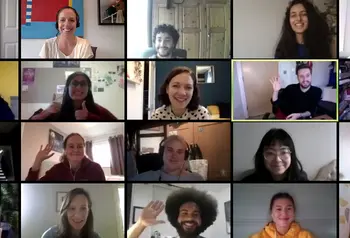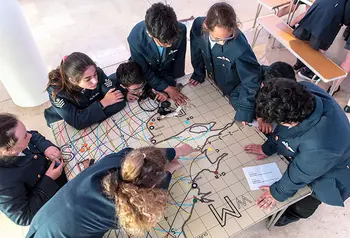Hope Streets: moving a heritage festival online

What is Hope Streets?
Hope Streets is a partnership of youth and heritage sector organisations across the North West of England, connecting young people with their local history.
Their annual Festival of Hope helps young festival producers collaborate with museums on a series of events celebrating hope and heritage through art forms such as music, film, performance and visual arts.
How did they adapt to digital during the pandemic?
With the first UK lockdown in March 2020, the festival pivoted from a face-to-face festival to a ‘blended approach’: combining socially distanced activities with online events via the website, Zoom, YouTube and other digital platforms.
This was a big shift for Hope Streets. Previously, the project had avoided using digital, as their young people preferred face-to-face engagement.
“[Before the pandemic] young people weren’t picking up on online sessions… COVID changed that on its head.”
Hope Streets staff
Following lockdown, young people were at the heart of re-shaping the festival and quickly adapted to online delivery. They generally had a greater familiarity with digital than staff and so led the way in planning events, commissioning artists and producing digital content.
“Most of our other projects came to a halt, but the Hope Streets projects were really quick and flexible. We have learnt so much from the young people about how they have adapted.”
Hope Streets staff
What were some of the key challenges?
Not all young people had access to the technology needed or were as comfortable with online sessions. Where possible, the team tried to address any digital access needs, for example by including mobile data so they could attend meetings if they did not have regular WiFi.
Despite this, sometimes the young people experienced digital fatigue – as their schoolwork and socialising was all online at the time too.

Another key concern was safeguarding. Existing policies for heritage organisations generally focused on face-to-face delivery. To address this, Hope Streets commissioned external organisations (like young people’s mental health charity 42nd Street) to provide training to staff on young people’s mental health and running safe online sessions.
Working online meant it was hard to appreciate the scale of the festival and celebrating the hard work that went into it.
What were the unexpected benefits of going digital?
The festival had a much wider reach than initially expected, reaching a national audience of over 4,500 people with the online platform. Local audiences were able to see physical installations and exhibitions.
Working online created new links between young people and their local community. For example, a young person worked with Tullie House to set up a Facebook group gathering photos, film and stories about Carlisle's live music past.

In the run-up to the festival, using online platforms removed the barrier of having to travel to planning sessions. It also helped young people connect with professionals from across the country.
The young people also experimented with activities like film making, podcasting and art, perhaps more than might have been possible through an in-person festival.
What effect did the project have on the young people's wellbeing?
The project offered the young people something to get stuck into, as well as a network of like-minded peers outside school. The young people, and staff, noticed they had a greater sense of purpose and community at a time when they felt increasingly isolated and lost.
Afterwards, a few successfully applied for work placements and two secured paid roles.
For some, their experience offered a tangible impact beyond the festival. A few successfully applied for work placements and two secured paid roles.
Importantly, after the initial disappointment, embracing digital allowed young people to adapt and deliver a festival they could be proud of.
What was the legacy of going digital?
Many of the young people continued to meet online and collaborated on subsequent projects, such as an exhibition at the Grosvenor Museum in Chester.
The partner museums are continuing a blended approach between in-person and online work.
While the Festival of Hope shifted online by necessity, the skills learned continue to influence Hope Streets’ projects and will be part of its legacy.
Find out more
Youthwork Support provides practical information for online youth work. It is created in partnership by National Youth Agency, UK Youth, The Mix, Federation for Detached Youth Work and Erasmus+.
Youthlink Scotland has created a forum to share resources around online youth work.
Centre for Youth Impact (via Building Connections) published a blog on creating online safe spaces for young people. CYI has also created an archive of survey results focusing on digital delivery during the pandemic.


